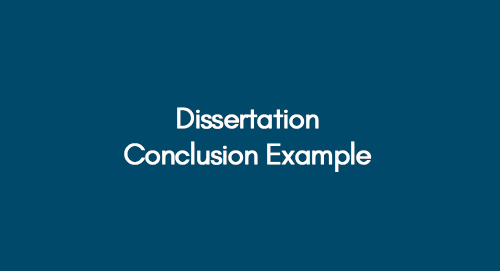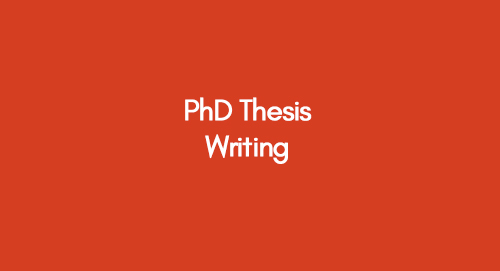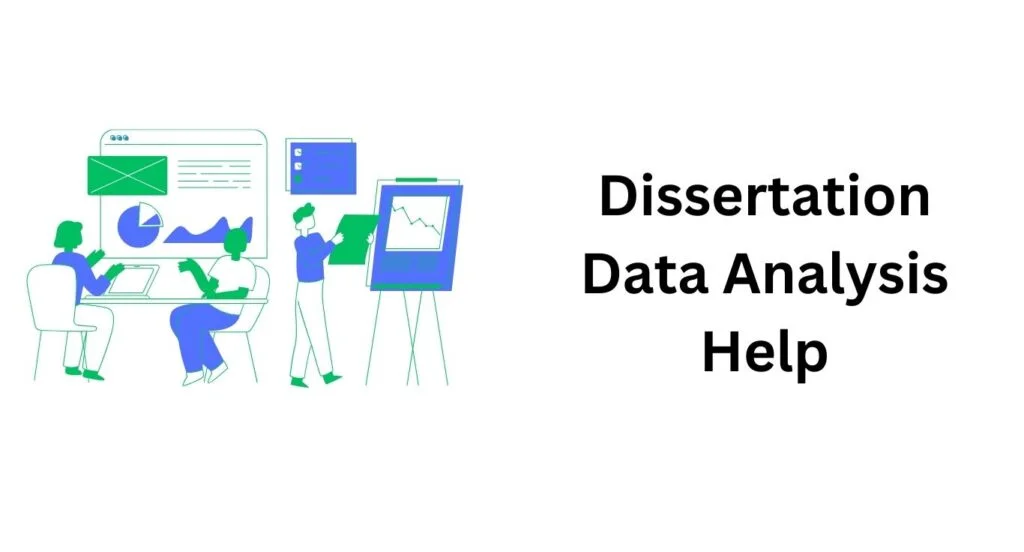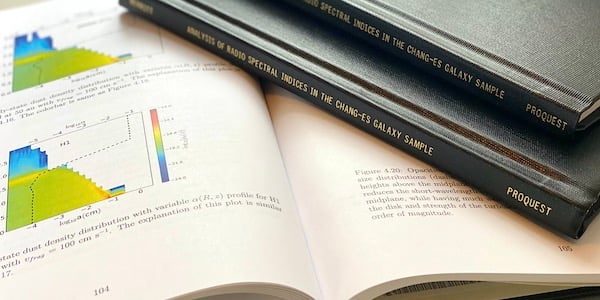Reference management. Clean and simple.

How to collect data for your thesis

Collecting theoretical data
Search for theses on your topic, use content-sharing platforms, collecting empirical data, qualitative vs. quantitative data, frequently asked questions about gathering data for your thesis, related articles.
After choosing a topic for your thesis , you’ll need to start gathering data. In this article, we focus on how to effectively collect theoretical and empirical data.
Empirical data : unique research that may be quantitative, qualitative, or mixed.
Theoretical data : secondary, scholarly sources like books and journal articles that provide theoretical context for your research.
Thesis : the culminating, multi-chapter project for a bachelor’s, master’s, or doctoral degree.
Qualitative data : info that cannot be measured, like observations and interviews .
Quantitative data : info that can be measured and written with numbers.
At this point in your academic life, you are already acquainted with the ways of finding potential references. Some obvious sources of theoretical material are:
- edited volumes
- conference proceedings
- online databases like Google Scholar , ERIC , or Scopus
You can also take a look at the top list of academic search engines .
Looking at other theses on your topic can help you see what approaches have been taken and what aspects other writers have focused on. Pay close attention to the list of references and follow the bread-crumbs back to the original theories and specialized authors.
Another method for gathering theoretical data is to read through content-sharing platforms. Many people share their papers and writings on these sites. You can either hunt sources, get some inspiration for your own work or even learn new angles of your topic.
Some popular content sharing sites are:
With these sites, you have to check the credibility of the sources. You can usually rely on the content, but we recommend double-checking just to be sure. Take a look at our guide on what are credible sources?
The more you know, the better. The guide, " How to undertake a literature search and review for dissertations and final year projects ," will give you all the tools needed for finding literature .
In order to successfully collect empirical data, you have to choose first what type of data you want as an outcome. There are essentially two options, qualitative or quantitative data. Many people mistake one term with the other, so it’s important to understand the differences between qualitative and quantitative research .
Boiled down, qualitative data means words and quantitative means numbers. Both types are considered primary sources . Whichever one adapts best to your research will define the type of methodology to carry out, so choose wisely.
| Data type | What is it? | Methodology |
|---|---|---|
Quantitative | Information that can be measured and written with numbers. This type of data claims to be credible, scientific and exact. | Surveys, tests, existing databases |
Qualitative | Information that cannot be measured. It may involve multimedia material or non-textual data. This type of data claims to be detailed, nuanced and contextual. | Observations, interviews, focus groups |
In the end, having in mind what type of outcome you intend and how much time you count on will lead you to choose the best type of empirical data for your research. For a detailed description of each methodology type mentioned above, read more about collecting data .
Once you gather enough theoretical and empirical data, you will need to start writing. But before the actual writing part, you have to structure your thesis to avoid getting lost in the sea of information. Take a look at our guide on how to structure your thesis for some tips and tricks.
The key to knowing what type of data you should collect for your thesis is knowing in advance the type of outcome you intend to have, and the amount of time you count with.
Some obvious sources of theoretical material are journals, libraries and online databases like Google Scholar , ERIC or Scopus , or take a look at the top list of academic search engines . You can also search for theses on your topic or read content sharing platforms, like Medium , Issuu , or Slideshare .
To gather empirical data, you have to choose first what type of data you want. There are two options, qualitative or quantitative data. You can gather data through observations, interviews, focus groups, or with surveys, tests, and existing databases.
Qualitative data means words, information that cannot be measured. It may involve multimedia material or non-textual data. This type of data claims to be detailed, nuanced and contextual.
Quantitative data means numbers, information that can be measured and written with numbers. This type of data claims to be credible, scientific and exact.

Open Access Theses and Dissertations
Thursday, April 18, 8:20am (EDT): Searching is temporarily offline. We apologize for the inconvenience and are working to bring searching back up as quickly as possible.
Advanced research and scholarship. Theses and dissertations, free to find, free to use.
Advanced search options
Browse by author name (“Author name starts with…”).
Find ETDs with:
| in | ||
| / | ||
| in | ||
| / | ||
| in | ||
| / | ||
| in | ||
Written in any language English Portuguese French German Spanish Swedish Lithuanian Dutch Italian Chinese Finnish Greek Published in any country US or Canada Argentina Australia Austria Belgium Bolivia Brazil Canada Chile China Colombia Czech Republic Denmark Estonia Finland France Germany Greece Hong Kong Hungary Iceland India Indonesia Ireland Italy Japan Latvia Lithuania Malaysia Mexico Netherlands New Zealand Norway Peru Portugal Russia Singapore South Africa South Korea Spain Sweden Switzerland Taiwan Thailand UK US Earliest date Latest date
Sorted by Relevance Author University Date
Only ETDs with Creative Commons licenses
Results per page: 30 60 100
October 3, 2022. OATD is dealing with a number of misbehaved crawlers and robots, and is currently taking some steps to minimize their impact on the system. This may require you to click through some security screen. Our apologies for any inconvenience.
Recent Additions
See all of this week’s new additions.
About OATD.org
OATD.org aims to be the best possible resource for finding open access graduate theses and dissertations published around the world. Metadata (information about the theses) comes from over 1100 colleges, universities, and research institutions . OATD currently indexes 7,213,579 theses and dissertations.
About OATD (our FAQ) .
Visual OATD.org
We’re happy to present several data visualizations to give an overall sense of the OATD.org collection by county of publication, language, and field of study.
You may also want to consult these sites to search for other theses:
- Google Scholar
- NDLTD , the Networked Digital Library of Theses and Dissertations. NDLTD provides information and a search engine for electronic theses and dissertations (ETDs), whether they are open access or not.
- Proquest Theses and Dissertations (PQDT), a database of dissertations and theses, whether they were published electronically or in print, and mostly available for purchase. Access to PQDT may be limited; consult your local library for access information.

Study at Cambridge
About the university, research at cambridge.
- Undergraduate courses
- Events and open days
- Fees and finance
- Postgraduate courses
- How to apply
- Postgraduate events
- Fees and funding
- International students
- Continuing education
- Executive and professional education
- Courses in education
- How the University and Colleges work
- Term dates and calendars
- Visiting the University
- Annual reports
- Equality and diversity
- A global university
- Public engagement
- Give to Cambridge
- For Cambridge students
- For our researchers
- Business and enterprise
- Colleges & departments
- Email & phone search
- Museums & collections

- Open Access Resources
- Publishing Open Access overview
- Accepted for Publication: What to do next
- Self-Archiving Policy Guidance overview
- Paying for Gold Open Access overview
- Accessing the University of Cambridge's block grants
- Accessing a Transitional Deal
- Accessing the University's Central Open Access Funding
- Discounts and Offsets
- Open access agreements
- Read & publish journals
- Funder Open Access Policies overview
- UK Open Access Policies overview
- REF overview
- OA and REF reporting
- Gold open access
- Policy exceptions
- Preprint servers overview
- Preprint server decision tree
- Preprint server-specific advice overview
- Preprint servers which allow accepted manuscripts to be uploaded
- Preprint servers which DO NOT allow accepted manuscripts to be uploaded
- Research Councils
- Wellcome Trust Monograph OA Policy
- Funder requirements for theses
- Other funders' Open Access policies
- Is my journal compliant?
- Open Access Policies for Books
- REF Support overview
- Navigating Symplectic Elements
- Elements metadata requirements for research outputs
- REF Open Access Reports From Elements
- REF Open Access Policy Requirements and Exceptions overview
- Deposit exceptions
- Access exceptions
- Technical exceptions
- Further exceptions
- Preprints metadata requirements for research outputs
- Eligibility definitions for research outputs overview
- Category: Books or parts of books
- Category: Journal articles
- Category: Physical artefacts
- Category: Exhibitions and performances
- Category: Other documents
- Category: Digital artefacts
- Category: Other
- REF Support FAQs
- Theses overview
- Preparing to deposit your thesis in Apollo
- Funder Open Access Requirements
- Guidance for choosing your access levels
- Who owns the copyright in your thesis?
- Advice on sensitive material
- Advice on copyright material
- Advice on redacting material from a thesis
- Submitting the electronic thesis
- Data and your thesis
- Masters theses
- Advice for Doctoral Alumni
- Finding and accessing theses
- University policies & guidance overview
- Cambridge Open Access Publications Policy Framework overview
- Self-Archiving Policy
- Cambridge funding guidelines
- Contact us overview
- The Open Access team
- Open Access
- Publishing Open Access
- Funder Open Access Policies
- REF Support
- University policies & guidance
What is research data?
Research data are the evidence that underpins the answer to your research question and can support the findings or outputs of your research. Research data takes many different forms. They may include for example, statistics, digital images, sound recordings, films, transcripts of interviews, survey data, artworks, published texts or manuscripts, or fieldwork observations. The term 'data' is more familiar to researchers in Science, Technology, Engineering and Mathematics (STEM), but any outputs from research could be considered data. For example, Humanities, Arts and Social Sciences (HASS) researchers might create data in the form of presentations, spreadsheets, documents, images, works of art, or musical scores. The Research Data Management Team in the University Library aim to help you plan, create, organise, share, and look after your research materials, whatever form they take. For more information about the Research data Management Team, visit their website .
Data Management Plans
Research Data Management is a complex issue, but if done correctly from the start, could save you a lot of time and hassle when you are writing up your thesis. We advise all students to consider data management as early as possible and create a Data Management Plan (DMP). The Research Data Management Team offer help in creating your DMP and can offer advice and training on how to do this. There are some departments that have joined a pilot project to include Data Management Plans in the registration reviews of PhD students. As part of the pilot, students are asked to complete a brief Data Management Plan (DMP) and supervisors and assessors ensure that the student has thought about all the issues and their responses are reasonable. If your department is taking part in the pilot or would like to, see the Data Management Plans for Pilot for Cambridge PhD Students page. The Research Data Management Team will provide support for any students, supervisors or assessors that are in need.
Submitting your digital thesis and depositing your data
If you have created data that is connected to your thesis and the data is in a format separate to the thesis file itself, we recommend that you deposit it in the data repository and make it open access to improve discoverability. We will accept data that either does not contain third party copyright, or contains third party copyright that has been cleared and is data of the following types:
- computer code written by the researcher
- software written by the researcher
- statistical data
- raw data from experiments
If you have created a research output which is not one of those listed above, please contact us on the [email protected] address and we will advise whether you should deposit this with your thesis, or separately in the data repository. If you are ready to deposit your data in the data repository, please do so via symplectic elements. More information on how to deposit can be found on the Research Data Management pages . If you wish to cite your data in your thesis, we can arranged for placeholder DOIs to be created in the data repository before your thesis is submitted. For further information, please email: [email protected]
Third party copyright in your data
For an explanation of what is third party copyright, please see the OSC third party copyright page . If your data is based on, or contains third party copyright you will need to obtain clearance to make your data open access in the data repository. It is possible to apply a 12 month embargo to datasets while clearance is obtained if you need extra time to do this. However, if it is not possible to clear the third party copyrighted material, it is not possible to deposit your data in the data repository. In these cases, it might be preferable to deposit your data with your thesis instead, under controlled access, but this can be complicated if you wish to deposit the thesis itself under a different access level. Please email [email protected] with any queries and we can advise on the best solution.
© 2020 Office of Scholarly Communication , University of Cambridge
This project is a joint initiative of Cambridge University Library and the Research Strategy Office .
Follow us on Twitter
Privacy policy
© 2024 University of Cambridge
- Contact the University
- Accessibility
- Freedom of information
- Privacy policy and cookies
- Statement on Modern Slavery
- Terms and conditions
- University A-Z
- Undergraduate
- Postgraduate
- Research news
- About research at Cambridge
- Spotlight on...
- Enroll & Pay
Open Access Theses and Dissertations (OATD)
OATD.org provides open access graduate theses and dissertations published around the world. Metadata (information about the theses) comes from over 1100 colleges, universities, and research institutions. OATD currently indexes 6,654,285 theses and dissertations.
Have a language expert improve your writing
Run a free plagiarism check in 10 minutes, generate accurate citations for free.
- Knowledge Base
- Dissertation
- Thesis & Dissertation Database Examples
Thesis & Dissertation Database Examples
Published on September 9, 2022 by Tegan George . Revised on July 6, 2024.
During the process of writing your thesis or dissertation , it can be helpful to read those submitted by other students.
Luckily, many universities have databases where you can find out who has written about your dissertation topic previously and how they approached it. While some databases are only accessible via your university library, more and more universities are making these databases public.
Instantly correct all language mistakes in your text
Upload your document to correct all your mistakes in minutes

Table of contents
General databases, university databases, other interesting articles.
Login required (but you can make an account):
- ProQuest Dissertations & Theses
- Open Access Theses and Dissertations
Don't submit your assignments before you do this
The academic proofreading tool has been trained on 1000s of academic texts. Making it the most accurate and reliable proofreading tool for students. Free citation check included.

Try for free
- Brown University
- NUI Galway LibGuides
- Cornell University
- Dartmouth College
- Harvard University
- University of Pennsylvania
If you want to know more about AI for academic writing, AI tools, or research bias, make sure to check out some of our other articles with explanations and examples or go directly to our tools!
Research bias
- Survivorship bias
- Self-serving bias
- Availability heuristic
- Halo effect
- Hindsight bias
- Deep learning
- Generative AI
- Machine learning
- Reinforcement learning
- Supervised vs. unsupervised learning
(AI) Tools
- Grammar Checker
- Paraphrasing Tool
- Text Summarizer
- AI Detector
- Plagiarism Checker
- Citation Generator
Cite this Scribbr article
If you want to cite this source, you can copy and paste the citation or click the “Cite this Scribbr article” button to automatically add the citation to our free Citation Generator.
George, T. (2024, July 05). Thesis & Dissertation Database Examples. Scribbr. Retrieved August 21, 2024, from https://www.scribbr.com/dissertation/thesis-databases/
Is this article helpful?
Tegan George
Other students also liked, dissertation binding and printing | options, tips, & comparison, dissertation layout and formatting, dissertation & thesis outline | example & free templates, "i thought ai proofreading was useless but..".
I've been using Scribbr for years now and I know it's a service that won't disappoint. It does a good job spotting mistakes”
- +44 7897 053596
- [email protected]

Get an experienced writer start working
Review our examples before placing an order, learn how to draft academic papers, a step-by-step guide to dissertation data analysis.

How to Write a Dissertation Conclusion? | Tips & Examples

What is PhD Thesis Writing? | Beginner’s Guide

A data analysis dissertation is a complex and challenging project requiring significant time, effort, and expertise. Fortunately, it is possible to successfully complete a data analysis dissertation with careful planning and execution.
As a student, you must know how important it is to have a strong and well-written dissertation, especially regarding data analysis. Proper data analysis is crucial to the success of your research and can often make or break your dissertation.
To get a better understanding, you may review the data analysis dissertation examples listed below;
- Impact of Leadership Style on the Job Satisfaction of Nurses
- Effect of Brand Love on Consumer Buying Behaviour in Dietary Supplement Sector
- An Insight Into Alternative Dispute Resolution
- An Investigation of Cyberbullying and its Impact on Adolescent Mental Health in UK
3-Step Dissertation Process!

Get 3+ Topics

Dissertation Proposal

Get Final Dissertation
Types of data analysis for dissertation.
The various types of data Analysis in a Dissertation are as follows;
1. Qualitative Data Analysis
Qualitative data analysis is a type of data analysis that involves analyzing data that cannot be measured numerically. This data type includes interviews, focus groups, and open-ended surveys. Qualitative data analysis can be used to identify patterns and themes in the data.
2. Quantitative Data Analysis
Quantitative data analysis is a type of data analysis that involves analyzing data that can be measured numerically. This data type includes test scores, income levels, and crime rates. Quantitative data analysis can be used to test hypotheses and to look for relationships between variables.
3. Descriptive Data Analysis
Descriptive data analysis is a type of data analysis that involves describing the characteristics of a dataset. This type of data analysis summarizes the main features of a dataset.
4. Inferential Data Analysis
Inferential data analysis is a type of data analysis that involves making predictions based on a dataset. This type of data analysis can be used to test hypotheses and make predictions about future events.
5. Exploratory Data Analysis
Exploratory data analysis is a type of data analysis that involves exploring a data set to understand it better. This type of data analysis can identify patterns and relationships in the data.
Time Period to Plan and Complete a Data Analysis Dissertation?
When planning dissertation data analysis, it is important to consider the dissertation methodology structure and time series analysis as they will give you an understanding of how long each stage will take. For example, using a qualitative research method, your data analysis will involve coding and categorizing your data.
This can be time-consuming, so allowing enough time in your schedule is important. Once you have coded and categorized your data, you will need to write up your findings. Again, this can take some time, so factor this into your schedule.
Finally, you will need to proofread and edit your dissertation before submitting it. All told, a data analysis dissertation can take anywhere from several weeks to several months to complete, depending on the project’s complexity. Therefore, starting planning early and allowing enough time in your schedule to complete the task is important.
Essential Strategies for Data Analysis Dissertation
A. Planning
The first step in any dissertation is planning. You must decide what you want to write about and how you want to structure your argument. This planning will involve deciding what data you want to analyze and what methods you will use for a data analysis dissertation.
B. Prototyping
Once you have a plan for your dissertation, it’s time to start writing. However, creating a prototype is important before diving head-first into writing your dissertation. A prototype is a rough draft of your argument that allows you to get feedback from your advisor and committee members. This feedback will help you fine-tune your argument before you start writing the final version of your dissertation.
C. Executing
After you have created a plan and prototype for your data analysis dissertation, it’s time to start writing the final version. This process will involve collecting and analyzing data and writing up your results. You will also need to create a conclusion section that ties everything together.
D. Presenting
The final step in acing your data analysis dissertation is presenting it to your committee. This presentation should be well-organized and professionally presented. During the presentation, you’ll also need to be ready to respond to questions concerning your dissertation.
Data Analysis Tools
Numerous suggestive tools are employed to assess the data and deduce pertinent findings for the discussion section. The tools used to analyze data and get a scientific conclusion are as follows:
a. Excel
Excel is a spreadsheet program part of the Microsoft Office productivity software suite. Excel is a powerful tool that can be used for various data analysis tasks, such as creating charts and graphs, performing mathematical calculations, and sorting and filtering data.
b. Google Sheets
Google Sheets is a free online spreadsheet application that is part of the Google Drive suite of productivity software. Google Sheets is similar to Excel in terms of functionality, but it also has some unique features, such as the ability to collaborate with other users in real-time.
c. SPSS
SPSS is a statistical analysis software program commonly used in the social sciences. SPSS can be used for various data analysis tasks, such as hypothesis testing, factor analysis, and regression analysis.
d. STATA
STATA is a statistical analysis software program commonly used in the sciences and economics. STATA can be used for data management, statistical modelling, descriptive statistics analysis, and data visualization tasks.
SAS is a commercial statistical analysis software program used by businesses and organizations worldwide. SAS can be used for predictive modelling, market research, and fraud detection.
R is a free, open-source statistical programming language popular among statisticians and data scientists. R can be used for tasks such as data wrangling, machine learning, and creating complex visualizations.
g. Python
A variety of applications may be used using the distinctive programming language Python, including web development, scientific computing, and artificial intelligence. Python also has a number of modules and libraries that can be used for data analysis tasks, such as numerical computing, statistical modelling, and data visualization.
Testimonials
Very satisfied students
This is our reason for working. We want to make all students happy, every day. Review us on Sitejabber
Tips to Compose a Successful Data Analysis Dissertation
a. Choose a Topic You’re Passionate About
The first step to writing a successful data analysis dissertation is to choose a topic you’re passionate about. Not only will this make the research and writing process more enjoyable, but it will also ensure that you produce a high-quality paper.
Choose a topic that is particular enough to be covered in your paper’s scope but not so specific that it will be challenging to obtain enough evidence to substantiate your arguments.
b. Do Your Research
data analysis in research is an important part of academic writing. Once you’ve selected a topic, it’s time to begin your research. Be sure to consult with your advisor or supervisor frequently during this stage to ensure that you are on the right track. In addition to secondary sources such as books, journal articles, and reports, you should also consider conducting primary research through surveys or interviews. This will give you first-hand insights into your topic that can be invaluable when writing your paper.
c. Develop a Strong Thesis Statement
After you’ve done your research, it’s time to start developing your thesis statement. It is arguably the most crucial part of your entire paper, so take care to craft a clear and concise statement that encapsulates the main argument of your paper.
Remember that your thesis statement should be arguable—that is, it should be capable of being disputed by someone who disagrees with your point of view. If your thesis statement is not arguable, it will be difficult to write a convincing paper.
d. Write a Detailed Outline
Once you have developed a strong thesis statement, the next step is to write a detailed outline of your paper. This will offer you a direction to write in and guarantee that your paper makes sense from beginning to end.
Your outline should include an introduction, in which you state your thesis statement; several body paragraphs, each devoted to a different aspect of your argument; and a conclusion, in which you restate your thesis and summarize the main points of your paper.
e. Write Your First Draft
With your outline in hand, it’s finally time to start writing your first draft. At this stage, don’t worry about perfecting your grammar or making sure every sentence is exactly right—focus on getting all of your ideas down on paper (or onto the screen). Once you have completed your first draft, you can revise it for style and clarity.
And there you have it! Following these simple tips can increase your chances of success when writing your data analysis dissertation. Just remember to start early, give yourself plenty of time to research and revise, and consult with your supervisor frequently throughout the process.
How Does It Work ?

Fill the Form

Writer Starts Working

3+ Topics Emailed!
Studying the above examples gives you valuable insight into the structure and content that should be included in your own data analysis dissertation. You can also learn how to effectively analyze and present your data and make a lasting impact on your readers.
In addition to being a useful resource for completing your dissertation, these examples can also serve as a valuable reference for future academic writing projects. By following these examples and understanding their principles, you can improve your data analysis skills and increase your chances of success in your academic career.
You may also contact Premier Dissertations to develop your data analysis dissertation.
For further assistance, some other resources in the dissertation writing section are shared below;
How Do You Select the Right Data Analysis
How to Write Data Analysis For A Dissertation?
How to Develop a Conceptual Framework in Dissertation?
What is a Hypothesis in a Dissertation?
Get an Immediate Response
Discuss your requirments with our writers
WhatsApp Us Email Us Chat with Us
Get 3+ Free Dissertation Topics within 24 hours?
Your Number
Academic Level Select Academic Level Undergraduate Masters PhD
Area of Research
admin farhan
Related posts.

What is Gibbs’ Reflective Cycle and How Can It Benefit You? | Applications and Example

How to be a Valedictorian | Easy Steps

230 Passion Project Ideas for Students
Comments are closed.

Librarians/Admins
- EBSCOhost Collection Manager
- EBSCO Experience Manager
- EBSCO Connect
- Start your research
- EBSCO Mobile App
Clinical Decisions Users
- DynaMed Decisions
- Dynamic Health
- Waiting Rooms
- NoveList Blog
EBSCO Open Dissertations
EBSCO Open Dissertations makes electronic theses and dissertations (ETDs) more accessible to researchers worldwide. The free portal is designed to benefit universities and their students and make ETDs more discoverable.
Increasing Discovery & Usage of ETD Research
With EBSCO Open Dissertations, institutions are offered an innovative approach to driving additional traffic to ETDs in institutional repositories. Our goal is to help make their students’ theses and dissertations as widely visible and cited as possible.
EBSCO Open Dissertations extends the work started in 2014, when EBSCO and the H.W. Wilson Foundation created American Doctoral Dissertations which contained indexing from the H.W. Wilson print publication, Doctoral Dissertations Accepted by American Universities, 1933-1955. In 2015, the H.W. Wilson Foundation agreed to support the expansion of the scope of the American Doctoral Dissertations database to include records for dissertations and theses from 1955 to the present.
How Does EBSCO Open Dissertations Work?
Libraries can add theses and dissertations to the database, making them freely available to researchers everywhere while increasing traffic to their institutional repository. ETD metadata is harvested via OAI and integrated into EBSCO’s platform, where pointers send traffic to the institution's IR.
EBSCO integrates this data into their current subscriber environments and makes the data available on the open web via opendissertations.org .
You might also be interested in:


- WilmU Library
- Subject/Research Guides
- Subject Guide
Dissertations & Theses/Capstones
- Find Dissertations & Theses
Dissertation, Thesis and Capstone Databases
Cite this library guide.
- Dissertation Research
- Requesting Dissertations through Interlibrary Loan
We are here to help you!
WilmU Librarians are available to help you with your research needs. Library instruction and research consultations are available by Zoom web conference, in person and by phone. You can Chat with one of the library staff or send an email for a quick question. If you have a more in-depth research need, please complete the consultation request form linked below.
- Student Consultation Request Students can request a one on one consultation for in depth research assistance.
- Online Library Support
- Faculty Library Instruction Request Faculty can request library instruction for themselves or their class. Sessions can be in the library, classroom or virtual.
- Library Home Page
- Library FAQ
- Library Tutorials View videos and tutorials on research and using the library databases.
Wilmington University Dissertation, Theses and Capstone Databases
- Wilmington University Institutional Repository - Dissertation Collection This link opens in a new window Browse through Wilmington University's most recently digitized dissertations.
- Wilmington University Capstones & Theses Repository This link opens in a new window Browse through Wilmington University's capstone projects.
Wilmington University Library. (2020, July). Dissertations & Theses. https://libguides.wilmu.edu/dissertations
APA 7th edition. Always verify your formatting and punctuation.
[Revised by M. Jones: July, 2024]
What is a dissertation?
A dissertation is a book-length thesis or treatise prepared as a requirement for the award of a doctoral degree (Ed.D., D.B.A., D.N.P., Ph.D.)
What is a thesis?
A thesis is book-length essay or treatise prepared as a requirement for the award of a master's degree.
Why use these for my research?
Dissertations can be especially useful for locating recent research that may not yet be published in book or article format. Revised dissertations are often published later as books or scholarly articles; to find these, try searching for other works written by the same author.
- Next: Dissertation Research >>
- Last Updated: Apr 29, 2024 8:59 AM
- Guide URL: https://libguides.wilmu.edu/dissertations

- Cookies & Privacy
- GETTING STARTED
- Introduction
- FUNDAMENTALS
Getting to the main article
Choosing your route
Setting research questions/ hypotheses
Assessment point
Building the theoretical case
Setting your research strategy
Data collection
Data analysis
Data analysis techniques
In STAGE NINE: Data analysis , we discuss the data you will have collected during STAGE EIGHT: Data collection . However, before you collect your data, having followed the research strategy you set out in this STAGE SIX , it is useful to think about the data analysis techniques you may apply to your data when it is collected.
The statistical tests that are appropriate for your dissertation will depend on (a) the research questions/hypotheses you have set, (b) the research design you are using, and (c) the nature of your data. You should already been clear about your research questions/hypotheses from STAGE THREE: Setting research questions and/or hypotheses , as well as knowing the goal of your research design from STEP TWO: Research design in this STAGE SIX: Setting your research strategy . These two pieces of information - your research questions/hypotheses and research design - will let you know, in principle , the statistical tests that may be appropriate to run on your data in order to answer your research questions.
We highlight the words in principle and may because the most appropriate statistical test to run on your data not only depend on your research questions/hypotheses and research design, but also the nature of your data . As you should have identified in STEP THREE: Research methods , and in the article, Types of variables , in the Fundamentals part of Lærd Dissertation, (a) not all data is the same, and (b) not all variables are measured in the same way (i.e., variables can be dichotomous, ordinal or continuous). In addition, not all data is normal , nor is the data when comparing groups necessarily equal , terms we explain in the Data Analysis section in the Fundamentals part of Lærd Dissertation. As a result, you might think that running a particular statistical test is correct at this point of setting your research strategy (e.g., a statistical test called a dependent t-test ), based on the research questions/hypotheses you have set, but when you collect your data (i.e., during STAGE EIGHT: Data collection ), the data may fail certain assumptions that are important to such a statistical test (i.e., normality and homogeneity of variance ). As a result, you have to run another statistical test (e.g., a Wilcoxon signed-rank test instead of a dependent t-test ).
At this stage in the dissertation process, it is important, or at the very least, useful to think about the data analysis techniques you may apply to your data when it is collected. We suggest that you do this for two reasons:
REASON A Supervisors sometimes expect you to know what statistical analysis you will perform at this stage of the dissertation process
This is not always the case, but if you have had to write a Dissertation Proposal or Ethics Proposal , there is sometimes an expectation that you explain the type of data analysis that you plan to carry out. An understanding of the data analysis that you will carry out on your data can also be an expected component of the Research Strategy chapter of your dissertation write-up (i.e., usually Chapter Three: Research Strategy ). Therefore, it is a good time to think about the data analysis process if you plan to start writing up this chapter at this stage.
REASON B It takes time to get your head around data analysis
When you come to analyse your data in STAGE NINE: Data analysis , you will need to think about (a) selecting the correct statistical tests to perform on your data, (b) running these tests on your data using a statistics package such as SPSS, and (c) learning how to interpret the output from such statistical tests so that you can answer your research questions or hypotheses. Whilst we show you how to do this for a wide range of scenarios in the in the Data Analysis section in the Fundamentals part of Lærd Dissertation, it can be a time consuming process. Unless you took an advanced statistics module/option as part of your degree (i.e., not just an introductory course to statistics, which are often taught in undergraduate and master?s degrees), it can take time to get your head around data analysis. Starting this process at this stage (i.e., STAGE SIX: Research strategy ), rather than waiting until you finish collecting your data (i.e., STAGE EIGHT: Data collection ) is a sensible approach.
Final thoughts...
Setting the research strategy for your dissertation required you to describe, explain and justify the research paradigm, quantitative research design, research method(s), sampling strategy, and approach towards research ethics and data analysis that you plan to follow, as well as determine how you will ensure the research quality of your findings so that you can effectively answer your research questions/hypotheses. However, from a practical perspective, just remember that the main goal of STAGE SIX: Research strategy is to have a clear research strategy that you can implement (i.e., operationalize ). After all, if you are unable to clearly follow your plan and carry out your research in the field, you will struggle to answer your research questions/hypotheses. Once you are sure that you have a clear plan, it is a good idea to take a step back, speak with your supervisor, and assess where you are before moving on to collect data. Therefore, when you are ready, proceed to STAGE SEVEN: Assessment point .
Ask Yale Library
My Library Accounts
Find, Request, and Use
Help and Research Support
Visit and Study
Explore Collections
Resources to Find Dissertations: Home
Description.
This page provides links to databases and websites to find dissertations. This includes links to general databases to find dissertations, databases focused on the humanities, foreign dissertations, dissertations on religion, and dissertations hosted by other universities.
General Databases
Humanities dissertations, foreign dissertations, religion dissertations, dissertations of universities, yale divinity library.

Science Dissertations
- Last Updated: Aug 22, 2023 5:35 PM
- URL: https://guides.library.yale.edu/dissertations
Site Navigation
P.O. BOX 208240 New Haven, CT 06250-8240 (203) 432-1775
Yale's Libraries
Bass Library
Beinecke Rare Book and Manuscript Library
Classics Library
Cushing/Whitney Medical Library
Divinity Library
East Asia Library
Gilmore Music Library
Haas Family Arts Library
Lewis Walpole Library
Lillian Goldman Law Library
Marx Science and Social Science Library
Sterling Memorial Library
Yale Center for British Art
SUBSCRIBE TO OUR NEWSLETTER
@YALELIBRARY

Yale Library Instagram
Accessibility Diversity, Equity, and Inclusion Giving Privacy and Data Use Contact Our Web Team
© 2022 Yale University Library • All Rights Reserved
- +1(424)-285-0253
- Address: 13th Street. 47 W 13th St, New York, NY 10011, USA.
Dissertation Data Analysis Help
- 24/7 Support
- 100+ Subjects
- 500+ PhD statisticians
Dissertation Data Analysis Help From Expert Statisticians

Dissertation data analysis plays a critical role in the development of the entire dissertation. The reliability of research results heavily relies on error-free and valid data analysis. However, due to the complexity involved in most data analysis projects, obtaining accurate results can be challenging for those unfamiliar with the various statistical tests and statistical analysis tools .
Additionally, the analysis process is lengthy, starting with the collection of valid and relevant data and ending with the presentation of results in the appropriate format. Fortunately, with reliable dissertation data analysis help, you can be assured of fast and accurate solutions
Struggling with data analysis for dissertation, thesis paper, or capstone project? Order Now and Get accurate Dissertation Data Analysis Help ORDER NOW
What is Data Analysis?

Data analysis is the process of analyzing the data to gain useful information that can be used to make informed data-driven decisions. In the context of dissertation writing, data analysis involves analyzing the collected data and addressing the proposed research questions and hypotheses in the dissertation.
Thus, dissertation data analysis help is a data analysis service tailored to help scholars, students, researchers, and other academicians in making informed decisions about whether the data supports the proposed research questions. It also helps in determining whether the collected data accurately addresses the main aim of the research paper.
Dissertation Data Analysis Plan

Are you feeling like you can do data analysis for the dissertation on your own? If you prefer doing data analysis on your own, you need to create a dissertation data analysis plan. A data analysis plan involves outlining a list of steps that will help you think through the data you will collect, what you will use it for, and how you will analyze it. Simply stated, a data analysis plan can be defined as a roadmap that details how your dissertation data will be collected, cleaned, transformed, and analyzed.
Remember, a good data analysis plan should ensure that your results are consistent with other chapters of your dissertation and more so the research questions and hypotheses. Here we outline the major components of a good data analysis plan for a dissertation.
- Restates research objectives and proposed hypothesis
- Discuss how you are going to collect your data
- Write a good inclusion/exclusion criteria
- Clearly state the variables to be used in the dissertation and their instrumentation. You can specify whether a variable will serve as an independent variable, dependent variable, confounding variable, or just as a covariate)
- Clearly outline how the data will be cleaned and transformed.
- Clearly state the statistical tool (s) that will be used in the analysis
- Outline the statistical test (s) that will be used to address each of the research questions.
If you’re not confident enough to write this piece, then you can always contact us for data analysis help.

Data Analysis Process
Data analysis being among the most sought-after services at Online-SPS is not a straightforward process. Essentially, it is a systematic process that involves several steps. The main steps involved in dissertation data analysis include:
- Data collection : This is the first step in the data analysis process. Data can be obtained using primary sources or secondary sources. The primary data sources involve using the right data collection tools to collect data from the target population. In this step, you’ll need to calculate the sample size that is representative of the target population. This enhances the generalization of the findings to all participants in the target population. For the secondary sources, you’re required to specify the method of getting the data from the sources (whether downloading, web-scraping, manual entry, etc).
- Data processing : This is the second step when performing data analysis for your dissertation. In fact, it is considered the most tedious process in any data analysis task. Data processing, also called data preprocessing , involves data cleaning , data transformation , and data integration to ensure the data is organized appropriately to address your research questions. Data cleaning involves removing duplicates and dealing with missing values in the data. Data transformation may involve creating new variables from the existing data to match the variables in the study. Data Integration may involve combining several related data into a single file to enhance analysis.
- Exploratory Data Analysis – Once the data is cleaned, transformed, and integrated, exploratory data analysis (EDA) is performed to summarize the main characteristics of the data. EDA can help you as a data analyst uncover some hidden insights that can inform the data analysis process when addressing the research questions.
- Data analysis : This is the next phase after EDA. It involves analyzing the data to address the research questions/hypotheses. Here, you need to select the most appropriate statistical tests that are consistent with your hypotheses. So, you can perform descriptive statistics such as mean, and standard deviation; and inferential statistics such as t-test, ANOVA; or advanced regression models.
- Data Interpretation and Report Writing : This is the last step in dissertation data analysis. It involves interpreting the data and writing the results section of your research paper. You may choose to enhance your interpretation using visuals such as bar charts, box plots, pie charts, etc.
The Scope of Data Analysis For Dissertation
When you seek dissertation data analysis help online, you need to understand its scope. In other words, what do you expect when you seek data analysis help for a dissertation ? Generally, reliable dissertation data analysis services should be comprehensive and should help you with both descriptive statistics and inferential statistics . Some of the statistical tests we can help you with when you seek help with data analysis for dissertations include:
- Correlation and regression analysis
- Hypothesis testing
- Chi-Square Test
- ANOVA, ANCOVA, MANOVA
- Non-parametric tests such as Mann–Whitney U-Test, Wilcoxon signed rank test, etc.
NOTE: The above list serves as an indication of some of the statistical tests you can get from dissertation data analysis services. There are other advanced statistical analysis tests you can get from such services.
With reliable dissertation statistics help , you will get data analysis help using various statistical tools, including SPSS, STATA, Minitab, R studio, JAMOVI, SAS, etc.
Why Choose Us For Data Analysis?
At Online SPSS Help, we understand the challenges of dissertation data analysis. Our team of PhD statisticians possess expertise in various statistical software and years of experience writing research papers. We can help you with all stages of data analysis, from cleaning and transformation to interpretation and report writing. Choose Online SPSS Help for fast, accurate, and expert dissertation data analysis services.
How Our Dissertation Data Analysis Services Works
At Online SPSS Help, professional data analysis services for research papers are one of our most sought-after services by many organizations, students, researchers, and other academicians. So, if you’re wondering how you can get help with dissertation data analysis from us, we got you covered. Just follow these 3 simple steps to get fast and accurate data analysis solutions:
- Place the order by clicking the ORDER NOW button – Fill in the FORM and Upload all the necessary documents, including data, survey questionnaires, dissertation paper, etc.
- Make secure payments – Once we confirm receipt of your payments, you will receive a confirmation email. Our expert statisticians will start processing your order.
- Download your dissertation data analysis solutions – You’ll be notified via email that your order is complete. You’ll only need to log into your dashboard and download your complete dissertation results and findings chapter.
NOTE: If you’re unsure whether we can handle your task, you can Send a Free Inquiry or Request a Dissertation Data Analysis Help Sample .
Still have questions? Contact Us for a Free Dissertation Data Analysis Consultation
How Online SPSS Help Assists in Dissertation Data Analysis
When it comes to dissertation data analysis, accuracy and reliability are of utmost importance. By selecting our reliable statistical data analysis services, you gain access to a team of experienced statisticians who possess the expertise to deliver fast and accurate results. We pride ourselves on our ability to handle complex data analysis tasks through our professional thesis data analysis services . Thus, if you need statistical help for dissertations , statistics assignment help , or any other dissertation data analysis service, we are here to help you.
Get reliable SPSS Dissertation Help now and be assured of high-quality data analysis services for your research work.
Main Services
SPSS Services
Statistics Writing Services
Dissertation Data Analysis Services
Professional Data Analysis Services
Data Analysis Help For Students
Biostatistics Assignment Help
Capstone Project Data Analysis Help
Statistical Analysis Software
Online SPSS Help provides professional data analysis services to many clients globally. Our data analysis services are not restricted to US , UK , Canada and Australia but rather extends to many other countries across the world. Hire our Expert Statisticians For top-quality data analysis services.
Guaranteed Success
We are confident in our ability to deliver high-quality SPSS homework help. That's why we offer the following guarantees:
Have questions or need help? Our support team is available 24/7 to assist you.
Our expert statisticians ensure your assignments are accurate, well-structured, and meet the highest academic standards.
We stand behind our work. If you're unsatisfied, we offer a money-back guarantee (details on our policy page)
We understand deadlines are crucial. Your completed assignments will be delivered on time, every time.
Not satisfied with something? We offer unlimited revisions until you're happy with the final results.
Still struggling with your data analysis project? Get Started Now & Unlock 15% Off Your First Project
- Harvard Library
- Research Guides
- Faculty of Arts & Sciences Libraries
Computer Science Library Research Guide
Find dissertations and theses.
- Get Started
- How to get the full-text
- What is Peer Review?
- Find Books in the SEC Library This link opens in a new window
- Find Conference Proceedings
- Find Patents This link opens in a new window
- Find Standards
- Find Technical Reports
- Find Videos
- Ask a Librarian This link opens in a new window
Engineering Librarian

How to search for Harvard dissertations
- DASH , Digital Access to Scholarship at Harvard, is the university's central, open-access repository for the scholarly output of faculty and the broader research community at Harvard. Most Ph.D. dissertations submitted from March 2012 forward are available online in DASH.
- Check HOLLIS, the Library Catalog, and refine your results by using the Advanced Search and limiting Resource Type to Dissertations
- Search the database ProQuest Dissertations & Theses Global Don't hesitate to Ask a Librarian for assistance.
How to search for Non-Harvard dissertations
Library Database:
- ProQuest Dissertations & Theses Global
Free Resources:
- Many universities provide full-text access to their dissertations via a digital repository. If you know the title of a particular dissertation or thesis, try doing a Google search.
Related Sites
- Formatting Your Dissertation - GSAS
- Ph.D. Dissertation Submission - FAS
- Empowering Students Before you Sign that Contract! - Copyright at Harvard Library
Select Library Titles
- << Previous: Find Conference Proceedings
- Next: Find Patents >>
- Last Updated: Feb 27, 2024 1:52 PM
- URL: https://guides.library.harvard.edu/cs
Harvard University Digital Accessibility Policy
We've detected unusual activity from your computer network
To continue, please click the box below to let us know you're not a robot.
Why did this happen?
Please make sure your browser supports JavaScript and cookies and that you are not blocking them from loading. For more information you can review our Terms of Service and Cookie Policy .
For inquiries related to this message please contact our support team and provide the reference ID below.
About Us arrow_drop_down expand_more
- News Releases
Our Values arrow_drop_down expand_more
- Diversity & Inclusion
- Accessibility
- Slavery Act Statement
Product Families arrow_drop_down expand_more

Content Solutions expand_more
- Books and Ebooks
- Dissertations
- News & Newspapers
- Primary Sources
- Streaming Video
Products by Subject expand_more
- Health & Medicine
- History & Social Change
- Interdisciplinary
- Science & Technology
- Social Sciences
Popular Products expand_more
- ProQuest One Academic
- ProQuest One Business
- ProQuest One Education
- ProQuest One Psychology
- ProQuest Black Studies
- Ebooks Offers for Libraries
Library Management expand_more
Discovery services expand_more, resource sharing expand_more, course resource lists expand_more, research management expand_more, mobile solutions expand_more.
- Innovative Mobile
Libraries We Serve expand_more
- Academic Solutions for universities, colleges, and community colleges of all sizes.
- Public Solutions for librarians supporting patrons of public libraries.
- K-12 Solutions for elementary schools, primary schools and high schools.
- Community College Solutions for community colleges, trade schools and two year programs.
- Government Solutions for governmental affairs offices, patent examiners, and grants administrators.
- Corporate Solutions for professionals in the pharmaceutical, legal industries and more.
Solutions For expand_more
- DEI E-Resources
- Print to Electronic
- Reclaiming Your Space
- Library Management
- Library Management – Public Libraries
- Community Engagement
- Content Discovery
- Research Repository
- Digital Preservation
- Resource Sharing
- Document Delivery
- Course Resources
Account Support expand_more
- Setup and Support
- Access Questions
- Renewing a Product
- Paying an Invoice
- Get Usage Data: ProQuest
- Get Usage Data: Alexander Street
- Submitting Dissertations
- Idea Exchange
- ProQuest Status Page
Tools & Resources expand_more
- Find a Title List
- Accessibility Documentation
- Open Access
Browse Collections by Subject expand_more
I want to expand_more.
- Start my Research
- Start Text & Data Mining
- Find Research Funding
- Keep up with Research News
- Showcase Research
- See Upcoming Webinars
- Contact Support
I’m Interested In expand_more
- Submitting a Dissertation
- Purchasing a Dissertation
- Assembling Course Materials
- Implementing a Mobile Campus App
Insights expand_more
How text and data mining enables digital literacy in the classroom.
Read about the University of Sydney’s journey to integrate text and data mining (TDM) into its undergraduate courses and incorporate it across disciplines
Meeting Your Needs expand_more
- Graduate Students
- Graduate Administrators
Products & Services expand_more
- ETD Dissemination
- Dissertation & Theses Global
- ETD Dashboard
Resources expand_more
- eLearning Modules
- Expert Advice Articles
Dissertations News expand_more
- Top 25 Most-Accessed Dissertations
- Dissertations Award Winners
Are you a researcher looking for scholarly content? Try searching our platform here...
Language preference
Do you want set this as your default language ?
Connect with ProQuest
For thesis and dissertation authors, maximize your impact with proquest direct publishing.

Publish Your Thesis or Dissertation
By publishing your thesis or dissertation with ProQuest Direct, you are joining global research communities through ProQuest Dissertations & Theses Global and now, Web of Science . Your scholarship will not only advance your field of study, but also contribute to a global knowledge network, connecting research across time and space. By publishing with ProQuest Direct's free and easy publishing service, you can influence your field of study while continuing to build your academic brand.
Now Discoverable in Web of Science
By partnering with Web of Science, ProQuest Direct Publishing now provides even greater global visibility to your work. Your thesis or dissertation will appear on the Web of Science platform alongside journal articles, conference proceedings, research data, books, preprints and patents. Your work will be at the epicenter of a premier research community.
To further amplify your scholarship, joint subscribers of the Web of Science and ProQuest Dissertations and Theses Global enjoy easy access to the full text from direct linking in Web of Science.

Expand Your Reach
NEW: Your work will now be included in the Web of Science as well as ProQuest Dissertations & Theses Global
4,000,000+ Researchers
By publishing, you'll expand your reach with both ProQuest Dissertations & Theses Global and Web of Science .
9,000+ Organizations
Institutions, libraries, governments, corporations, and other entities, including 99% of the world's top 400 universities.
100+ Countries
Global diversity with over half full-text works created outside the United States.
I received a message from ProQuest saying that mine was the most read dissertation in October, and I thought, wow! Then it was again November - April! Building networks of thought is a genius human discovery.
Rache Quick, Masters Student Author University of Missouri
Connecting Global Scholarship
5,600,000 Titles
Get connected to a multi-disciplinary collection, including 3 million full-text works.
250,000 Added Annually
ProQuest Dissertations & Theses Global increases in size by over 250,000 works each year.
Disseminating Since 1939
Repository of the largest editorially-curated collection of theses and dissertations.

Progressing STEM Studies with a Critical Primary Research Source
Author, Technologist, and Doctoral Student, Ida Joiner shares her story on leveraging dissertations to engage with current trends, cite a comprehensive foundation and build towards her own research goals.
Advantages to Publishing with ProQuest

Publish anywhere
Rights are non-exclusive, and you retain all copyrights.

Simple & Free
Our easy-to-use ETD Administrator tool allows you to publish your work without cost.

Additional Services
ProQuest offers Open Access publishing , U.S. Copyright registration , and discounted printing and binding services .

Lifetime Access
You'll have limetime access to PDF versions of your work.

How to Publish with ProQuest
The ProQuest submission process requires providing information about you, your dissertation or thesis, and your degree program. You'll also upload these relevant documents.
- A copy of your dissertation or thesis
- Any supplemental or permission documents
- Proof of degree

Printed Copies
Student authors receive discounted prices on printed copies available in hardcover and softcover in various sizes.

Open Access Services
ProQuest offers an optional Open Access publishing service to authors who wish to make their work freely downloadable to those searching ProQuest.com through the open web.

U.S Copyright Registrations
Take the next step towards protecting your intellectual property by taking advantage of our U.S. Copyright registrations services.

Dissertation Structure & Layout 101: How to structure your dissertation, thesis or research project.
By: Derek Jansen (MBA) Reviewed By: David Phair (PhD) | July 2019
So, you’ve got a decent understanding of what a dissertation is , you’ve chosen your topic and hopefully you’ve received approval for your research proposal . Awesome! Now its time to start the actual dissertation or thesis writing journey.
To craft a high-quality document, the very first thing you need to understand is dissertation structure . In this post, we’ll walk you through the generic dissertation structure and layout, step by step. We’ll start with the big picture, and then zoom into each chapter to briefly discuss the core contents. If you’re just starting out on your research journey, you should start with this post, which covers the big-picture process of how to write a dissertation or thesis .

*The Caveat *
In this post, we’ll be discussing a traditional dissertation/thesis structure and layout, which is generally used for social science research across universities, whether in the US, UK, Europe or Australia. However, some universities may have small variations on this structure (extra chapters, merged chapters, slightly different ordering, etc).
So, always check with your university if they have a prescribed structure or layout that they expect you to work with. If not, it’s safe to assume the structure we’ll discuss here is suitable. And even if they do have a prescribed structure, you’ll still get value from this post as we’ll explain the core contents of each section.
Overview: S tructuring a dissertation or thesis
- Acknowledgements page
- Abstract (or executive summary)
- Table of contents , list of figures and tables
- Chapter 1: Introduction
- Chapter 2: Literature review
- Chapter 3: Methodology
- Chapter 4: Results
- Chapter 5: Discussion
- Chapter 6: Conclusion
- Reference list
As I mentioned, some universities will have slight variations on this structure. For example, they want an additional “personal reflection chapter”, or they might prefer the results and discussion chapter to be merged into one. Regardless, the overarching flow will always be the same, as this flow reflects the research process , which we discussed here – i.e.:
- The introduction chapter presents the core research question and aims .
- The literature review chapter assesses what the current research says about this question.
- The methodology, results and discussion chapters go about undertaking new research about this question.
- The conclusion chapter (attempts to) answer the core research question .
In other words, the dissertation structure and layout reflect the research process of asking a well-defined question(s), investigating, and then answering the question – see below.

To restate that – the structure and layout of a dissertation reflect the flow of the overall research process . This is essential to understand, as each chapter will make a lot more sense if you “get” this concept. If you’re not familiar with the research process, read this post before going further.
Right. Now that we’ve covered the big picture, let’s dive a little deeper into the details of each section and chapter. Oh and by the way, you can also grab our free dissertation/thesis template here to help speed things up.
The title page of your dissertation is the very first impression the marker will get of your work, so it pays to invest some time thinking about your title. But what makes for a good title? A strong title needs to be 3 things:
- Succinct (not overly lengthy or verbose)
- Specific (not vague or ambiguous)
- Representative of the research you’re undertaking (clearly linked to your research questions)
Typically, a good title includes mention of the following:
- The broader area of the research (i.e. the overarching topic)
- The specific focus of your research (i.e. your specific context)
- Indication of research design (e.g. quantitative , qualitative , or mixed methods ).
For example:
A quantitative investigation [research design] into the antecedents of organisational trust [broader area] in the UK retail forex trading market [specific context/area of focus].
Again, some universities may have specific requirements regarding the format and structure of the title, so it’s worth double-checking expectations with your institution (if there’s no mention in the brief or study material).

Acknowledgements
This page provides you with an opportunity to say thank you to those who helped you along your research journey. Generally, it’s optional (and won’t count towards your marks), but it is academic best practice to include this.
So, who do you say thanks to? Well, there’s no prescribed requirements, but it’s common to mention the following people:
- Your dissertation supervisor or committee.
- Any professors, lecturers or academics that helped you understand the topic or methodologies.
- Any tutors, mentors or advisors.
- Your family and friends, especially spouse (for adult learners studying part-time).
There’s no need for lengthy rambling. Just state who you’re thankful to and for what (e.g. thank you to my supervisor, John Doe, for his endless patience and attentiveness) – be sincere. In terms of length, you should keep this to a page or less.
Abstract or executive summary
The dissertation abstract (or executive summary for some degrees) serves to provide the first-time reader (and marker or moderator) with a big-picture view of your research project. It should give them an understanding of the key insights and findings from the research, without them needing to read the rest of the report – in other words, it should be able to stand alone .
For it to stand alone, your abstract should cover the following key points (at a minimum):
- Your research questions and aims – what key question(s) did your research aim to answer?
- Your methodology – how did you go about investigating the topic and finding answers to your research question(s)?
- Your findings – following your own research, what did do you discover?
- Your conclusions – based on your findings, what conclusions did you draw? What answers did you find to your research question(s)?
So, in much the same way the dissertation structure mimics the research process, your abstract or executive summary should reflect the research process, from the initial stage of asking the original question to the final stage of answering that question.
In practical terms, it’s a good idea to write this section up last , once all your core chapters are complete. Otherwise, you’ll end up writing and rewriting this section multiple times (just wasting time). For a step by step guide on how to write a strong executive summary, check out this post .
Need a helping hand?
Table of contents
This section is straightforward. You’ll typically present your table of contents (TOC) first, followed by the two lists – figures and tables. I recommend that you use Microsoft Word’s automatic table of contents generator to generate your TOC. If you’re not familiar with this functionality, the video below explains it simply:
If you find that your table of contents is overly lengthy, consider removing one level of depth. Oftentimes, this can be done without detracting from the usefulness of the TOC.
Right, now that the “admin” sections are out of the way, its time to move on to your core chapters. These chapters are the heart of your dissertation and are where you’ll earn the marks. The first chapter is the introduction chapter – as you would expect, this is the time to introduce your research…
It’s important to understand that even though you’ve provided an overview of your research in your abstract, your introduction needs to be written as if the reader has not read that (remember, the abstract is essentially a standalone document). So, your introduction chapter needs to start from the very beginning, and should address the following questions:
- What will you be investigating (in plain-language, big picture-level)?
- Why is that worth investigating? How is it important to academia or business? How is it sufficiently original?
- What are your research aims and research question(s)? Note that the research questions can sometimes be presented at the end of the literature review (next chapter).
- What is the scope of your study? In other words, what will and won’t you cover ?
- How will you approach your research? In other words, what methodology will you adopt?
- How will you structure your dissertation? What are the core chapters and what will you do in each of them?
These are just the bare basic requirements for your intro chapter. Some universities will want additional bells and whistles in the intro chapter, so be sure to carefully read your brief or consult your research supervisor.
If done right, your introduction chapter will set a clear direction for the rest of your dissertation. Specifically, it will make it clear to the reader (and marker) exactly what you’ll be investigating, why that’s important, and how you’ll be going about the investigation. Conversely, if your introduction chapter leaves a first-time reader wondering what exactly you’ll be researching, you’ve still got some work to do.
Now that you’ve set a clear direction with your introduction chapter, the next step is the literature review . In this section, you will analyse the existing research (typically academic journal articles and high-quality industry publications), with a view to understanding the following questions:
- What does the literature currently say about the topic you’re investigating?
- Is the literature lacking or well established? Is it divided or in disagreement?
- How does your research fit into the bigger picture?
- How does your research contribute something original?
- How does the methodology of previous studies help you develop your own?
Depending on the nature of your study, you may also present a conceptual framework towards the end of your literature review, which you will then test in your actual research.
Again, some universities will want you to focus on some of these areas more than others, some will have additional or fewer requirements, and so on. Therefore, as always, its important to review your brief and/or discuss with your supervisor, so that you know exactly what’s expected of your literature review chapter.

Now that you’ve investigated the current state of knowledge in your literature review chapter and are familiar with the existing key theories, models and frameworks, its time to design your own research. Enter the methodology chapter – the most “science-ey” of the chapters…
In this chapter, you need to address two critical questions:
- Exactly HOW will you carry out your research (i.e. what is your intended research design)?
- Exactly WHY have you chosen to do things this way (i.e. how do you justify your design)?
Remember, the dissertation part of your degree is first and foremost about developing and demonstrating research skills . Therefore, the markers want to see that you know which methods to use, can clearly articulate why you’ve chosen then, and know how to deploy them effectively.
Importantly, this chapter requires detail – don’t hold back on the specifics. State exactly what you’ll be doing, with who, when, for how long, etc. Moreover, for every design choice you make, make sure you justify it.
In practice, you will likely end up coming back to this chapter once you’ve undertaken all your data collection and analysis, and revise it based on changes you made during the analysis phase. This is perfectly fine. Its natural for you to add an additional analysis technique, scrap an old one, etc based on where your data lead you. Of course, I’m talking about small changes here – not a fundamental switch from qualitative to quantitative, which will likely send your supervisor in a spin!
You’ve now collected your data and undertaken your analysis, whether qualitative, quantitative or mixed methods. In this chapter, you’ll present the raw results of your analysis . For example, in the case of a quant study, you’ll present the demographic data, descriptive statistics, inferential statistics , etc.
Typically, Chapter 4 is simply a presentation and description of the data, not a discussion of the meaning of the data. In other words, it’s descriptive, rather than analytical – the meaning is discussed in Chapter 5. However, some universities will want you to combine chapters 4 and 5, so that you both present and interpret the meaning of the data at the same time. Check with your institution what their preference is.
Now that you’ve presented the data analysis results, its time to interpret and analyse them. In other words, its time to discuss what they mean, especially in relation to your research question(s).
What you discuss here will depend largely on your chosen methodology. For example, if you’ve gone the quantitative route, you might discuss the relationships between variables . If you’ve gone the qualitative route, you might discuss key themes and the meanings thereof. It all depends on what your research design choices were.
Most importantly, you need to discuss your results in relation to your research questions and aims, as well as the existing literature. What do the results tell you about your research questions? Are they aligned with the existing research or at odds? If so, why might this be? Dig deep into your findings and explain what the findings suggest, in plain English.
The final chapter – you’ve made it! Now that you’ve discussed your interpretation of the results, its time to bring it back to the beginning with the conclusion chapter . In other words, its time to (attempt to) answer your original research question s (from way back in chapter 1). Clearly state what your conclusions are in terms of your research questions. This might feel a bit repetitive, as you would have touched on this in the previous chapter, but its important to bring the discussion full circle and explicitly state your answer(s) to the research question(s).

Next, you’ll typically discuss the implications of your findings . In other words, you’ve answered your research questions – but what does this mean for the real world (or even for academia)? What should now be done differently, given the new insight you’ve generated?
Lastly, you should discuss the limitations of your research, as well as what this means for future research in the area. No study is perfect, especially not a Masters-level. Discuss the shortcomings of your research. Perhaps your methodology was limited, perhaps your sample size was small or not representative, etc, etc. Don’t be afraid to critique your work – the markers want to see that you can identify the limitations of your work. This is a strength, not a weakness. Be brutal!
This marks the end of your core chapters – woohoo! From here on out, it’s pretty smooth sailing.
The reference list is straightforward. It should contain a list of all resources cited in your dissertation, in the required format, e.g. APA , Harvard, etc.
It’s essential that you use reference management software for your dissertation. Do NOT try handle your referencing manually – its far too error prone. On a reference list of multiple pages, you’re going to make mistake. To this end, I suggest considering either Mendeley or Zotero. Both are free and provide a very straightforward interface to ensure that your referencing is 100% on point. I’ve included a simple how-to video for the Mendeley software (my personal favourite) below:
Some universities may ask you to include a bibliography, as opposed to a reference list. These two things are not the same . A bibliography is similar to a reference list, except that it also includes resources which informed your thinking but were not directly cited in your dissertation. So, double-check your brief and make sure you use the right one.
The very last piece of the puzzle is the appendix or set of appendices. This is where you’ll include any supporting data and evidence. Importantly, supporting is the keyword here.
Your appendices should provide additional “nice to know”, depth-adding information, which is not critical to the core analysis. Appendices should not be used as a way to cut down word count (see this post which covers how to reduce word count ). In other words, don’t place content that is critical to the core analysis here, just to save word count. You will not earn marks on any content in the appendices, so don’t try to play the system!
Time to recap…
And there you have it – the traditional dissertation structure and layout, from A-Z. To recap, the core structure for a dissertation or thesis is (typically) as follows:
- Acknowledgments page
Most importantly, the core chapters should reflect the research process (asking, investigating and answering your research question). Moreover, the research question(s) should form the golden thread throughout your dissertation structure. Everything should revolve around the research questions, and as you’ve seen, they should form both the start point (i.e. introduction chapter) and the endpoint (i.e. conclusion chapter).
I hope this post has provided you with clarity about the traditional dissertation/thesis structure and layout. If you have any questions or comments, please leave a comment below, or feel free to get in touch with us. Also, be sure to check out the rest of the Grad Coach Blog .

Psst... there’s more!
This post was based on one of our popular Research Bootcamps . If you're working on a research project, you'll definitely want to check this out ...
36 Comments
many thanks i found it very useful
Glad to hear that, Arun. Good luck writing your dissertation.
Such clear practical logical advice. I very much needed to read this to keep me focused in stead of fretting.. Perfect now ready to start my research!
what about scientific fields like computer or engineering thesis what is the difference in the structure? thank you very much
Thanks so much this helped me a lot!
Very helpful and accessible. What I like most is how practical the advice is along with helpful tools/ links.
Thanks Ade!
Thank you so much sir.. It was really helpful..
You’re welcome!
Hi! How many words maximum should contain the abstract?
Thank you so much 😊 Find this at the right moment
You’re most welcome. Good luck with your dissertation.
best ever benefit i got on right time thank you
Many times Clarity and vision of destination of dissertation is what makes the difference between good ,average and great researchers the same way a great automobile driver is fast with clarity of address and Clear weather conditions .
I guess Great researcher = great ideas + knowledge + great and fast data collection and modeling + great writing + high clarity on all these
You have given immense clarity from start to end.
Morning. Where will I write the definitions of what I’m referring to in my report?
Thank you so much Derek, I was almost lost! Thanks a tonnnn! Have a great day!
Thanks ! so concise and valuable
This was very helpful. Clear and concise. I know exactly what to do now.
Thank you for allowing me to go through briefly. I hope to find time to continue.
Really useful to me. Thanks a thousand times
Very interesting! It will definitely set me and many more for success. highly recommended.
Thank you soo much sir, for the opportunity to express my skills
Usefull, thanks a lot. Really clear
Very nice and easy to understand. Thank you .
That was incredibly useful. Thanks Grad Coach Crew!
My stress level just dropped at least 15 points after watching this. Just starting my thesis for my grad program and I feel a lot more capable now! Thanks for such a clear and helpful video, Emma and the GradCoach team!
Do we need to mention the number of words the dissertation contains in the main document?
It depends on your university’s requirements, so it would be best to check with them 🙂
Such a helpful post to help me get started with structuring my masters dissertation, thank you!
Great video; I appreciate that helpful information
It is so necessary or avital course
This blog is very informative for my research. Thank you
Doctoral students are required to fill out the National Research Council’s Survey of Earned Doctorates
wow this is an amazing gain in my life
This is so good
How can i arrange my specific objectives in my dissertation?
Trackbacks/Pingbacks
- What Is A Literature Review (In A Dissertation Or Thesis) - Grad Coach - […] is to write the actual literature review chapter (this is usually the second chapter in a typical dissertation or…
Submit a Comment Cancel reply
Your email address will not be published. Required fields are marked *
Save my name, email, and website in this browser for the next time I comment.
- Print Friendly

COMMENTS
After choosing a topic for your thesis, you'll need to start gathering data. In this article, we focus on how to effectively collect theoretical and empirical data. Glossary. Empirical data: unique research that may be quantitative, qualitative, or mixed. Theoretical data: secondary, scholarly sources like books and journal articles that ...
Over the last 80 years, ProQuest has built the world's most comprehensive and renowned dissertations program. ProQuest Dissertations & Theses Global (PQDT Global), continues to grow its repository of 5 million graduate works each year, thanks to the continued contribution from the world's universities, creating an ever-growing resource of emerging research to fuel innovation and new insights.
You may also want to consult these sites to search for other theses: Google Scholar; NDLTD, the Networked Digital Library of Theses and Dissertations.NDLTD provides information and a search engine for electronic theses and dissertations (ETDs), whether they are open access or not. Proquest Theses and Dissertations (PQDT), a database of dissertations and theses, whether they were published ...
If you are ready to deposit your data in the data repository, please do so via symplectic elements. More information on how to deposit can be found on the Research Data Management pages. If you wish to cite your data in your thesis, we can arranged for placeholder DOIs to be created in the data repository before your thesis is submitted.
ProQuest Dissertations and Theses Global with the Web of Science™ enables researchers to seamlessly uncover early career, post-graduate research in the form of more than 5.5 million dissertations and theses from over 4,100 institutions from more than 60 countries, alongside journal articles, conference proceedings, research data, books, preprints and patents.
OATD.org provides open access graduate theses and dissertations published around the world. Metadata (information about the theses) comes from over 1100 colleges, universities, and research institutions. OATD currently indexes 6,654,285 theses and dissertations.
Thesis & Dissertation Database Examples. Published on September 9, 2022 by Tegan George. Revised on July 6, 2024. During the process of writing your thesis or dissertation, it can be helpful to read those submitted by other students.
The results chapter (also referred to as the findings or analysis chapter) is one of the most important chapters of your dissertation or thesis because it shows the reader what you've found in terms of the quantitative data you've collected. It presents the data using a clear text narrative, supported by tables, graphs and charts.
Fast-track your project, today. Drop us a message or book a no-obligation consultation. If you are a human seeing this field, please leave it empty. Get 1-on-1 help analysing and interpreting your qualitative or quantitative dissertation or thesis data from the experts at Grad Coach. Book online now.
Secondary research plays a crucial role in dissertation writing, providing a foundation for your primary research. By leveraging existing data, you can gain valuable insights, identify research gaps, and enhance the credibility of your study. Unlike primary research, which involves collecting original data directly through experiments, surveys ...
Data analysis and interpretation are critical stages in your dissertation that transform raw data into meaningful insights, directly impacting the quality and credibility of your research. This guide has provided a comprehensive overview of the steps and techniques necessary for effectively analysing and interpreting your data.
Types of Data Analysis for Dissertation. The various types of data Analysis in a Dissertation are as follows; 1. Qualitative Data Analysis. Qualitative data analysis is a type of data analysis that involves analyzing data that cannot be measured numerically. This data type includes interviews, focus groups, and open-ended surveys.
EBSCO Open Dissertations makes electronic theses and dissertations (ETDs) more accessible to researchers worldwide. The free portal is designed to benefit universities and their students and make ETDs more discoverable. Content Includes: 1,500,000 electronic theses and dissertations. 320 worldwide universities that have loaded their ...
Open Dissertations (formerly American Doctoral Dissertations) This link opens in a new window OpenDissertations is an open-access database built to assist researchers in locating both historic and contemporary dissertations and theses. It is a free database with records for more than 800,000 electronic theses and dissertations from around the world.
Craft a convincing dissertation or thesis research proposal. Write a clear, compelling introduction chapter. Undertake a thorough review of the existing research and write up a literature review. Undertake your own research. Present and interpret your findings. Draw a conclusion and discuss the implications.
Each month ProQuest posts the top 25 Most-Accessed Dissertations and Theses across all subjects, based upon total document views. Check out the current list of top titles (where a number is listed more than once, this indicates a tie in usage). View the Archives to see lists from previous months.
An understanding of the data analysis that you will carry out on your data can also be an expected component of the Research Strategy chapter of your dissertation write-up (i.e., usually Chapter Three: Research Strategy). Therefore, it is a good time to think about the data analysis process if you plan to start writing up this chapter at this ...
A free, online database of Ohio's undergraduate, masters and doctoral theses and dissertations from participating OhioLINK member schools. It contains the abstract for all included theses and dissertations. The full-text is also available if it was submitted. Rutgers Electronic Theses & Dissertations (RUetd)
How Our Dissertation Data Analysis Services Works. At Online SPSS Help, professional data analysis services for research papers are one of our most sought-after services by many organizations, students, researchers, and other academicians. So, if you're wondering how you can get help with dissertation data analysis from us, we got you covered ...
How to search for Harvard dissertations. DASH, Digital Access to Scholarship at Harvard, is the university's central, open-access repository for the scholarly output of faculty and the broader research community at Harvard.Most Ph.D. dissertations submitted from March 2012 forward are available online in DASH.; Check HOLLIS, the Library Catalog, and refine your results by using the Advanced ...
The results chapter in a dissertation or thesis (or any formal academic research piece) is where you objectively and neutrally present the findings of your qualitative analysis (or analyses if you used multiple qualitative analysis methods ). This chapter can sometimes be combined with the discussion chapter (where you interpret the data and ...
At least three banks managed to get advanced word on Wednesday's hotly anticipated payroll numbers while the rest of Wall Street was kept waiting by an unexpected delay.
Your thesis or dissertation will appear on the Web of Science platform alongside journal articles, conference proceedings, research data, books, preprints and patents. Your work will be at the epicenter of a premier research community. To further amplify your scholarship, joint subscribers of the Web of Science and ProQuest Dissertations and ...
Time to recap…. And there you have it - the traditional dissertation structure and layout, from A-Z. To recap, the core structure for a dissertation or thesis is (typically) as follows: Title page. Acknowledgments page. Abstract (or executive summary) Table of contents, list of figures and tables.